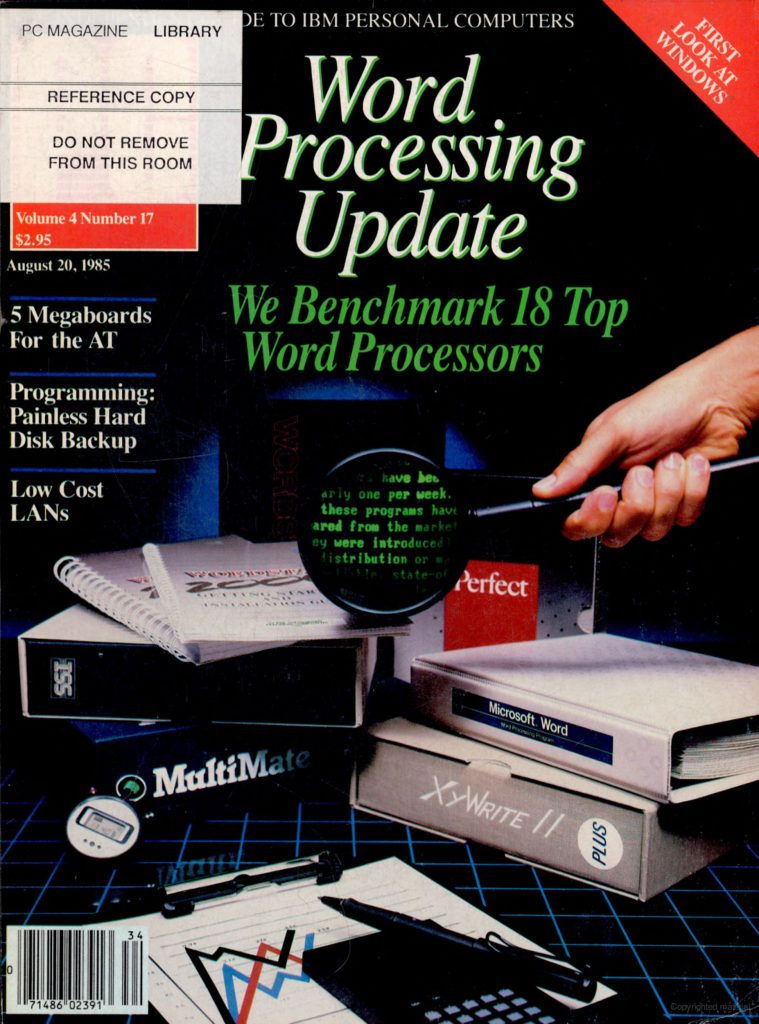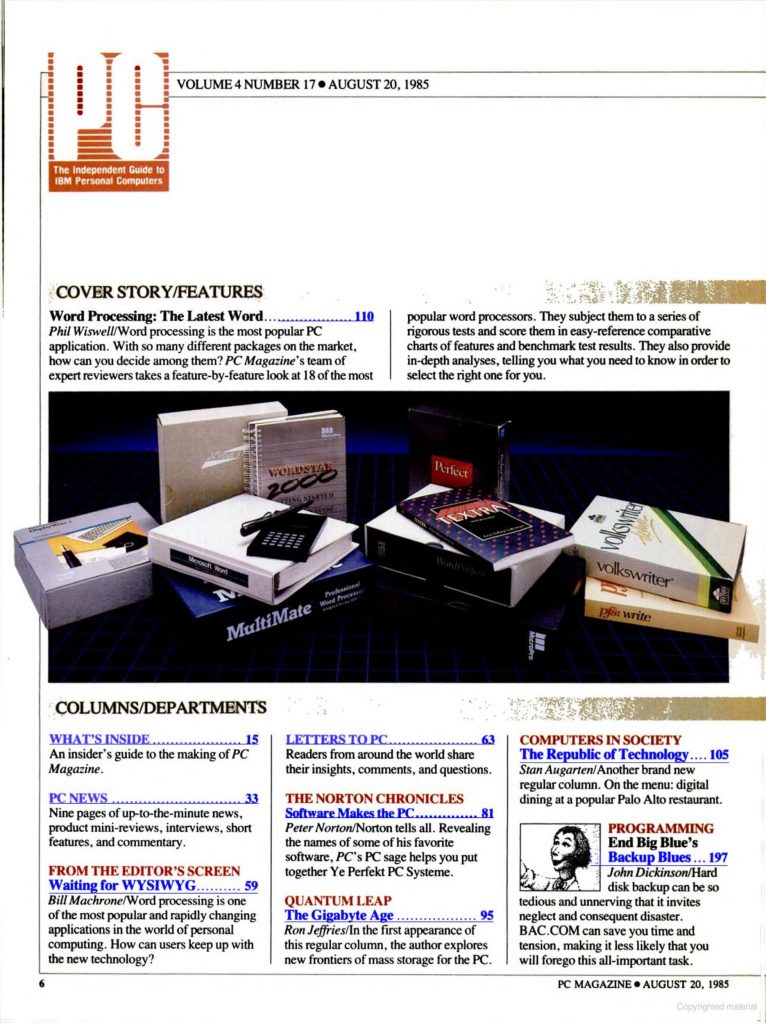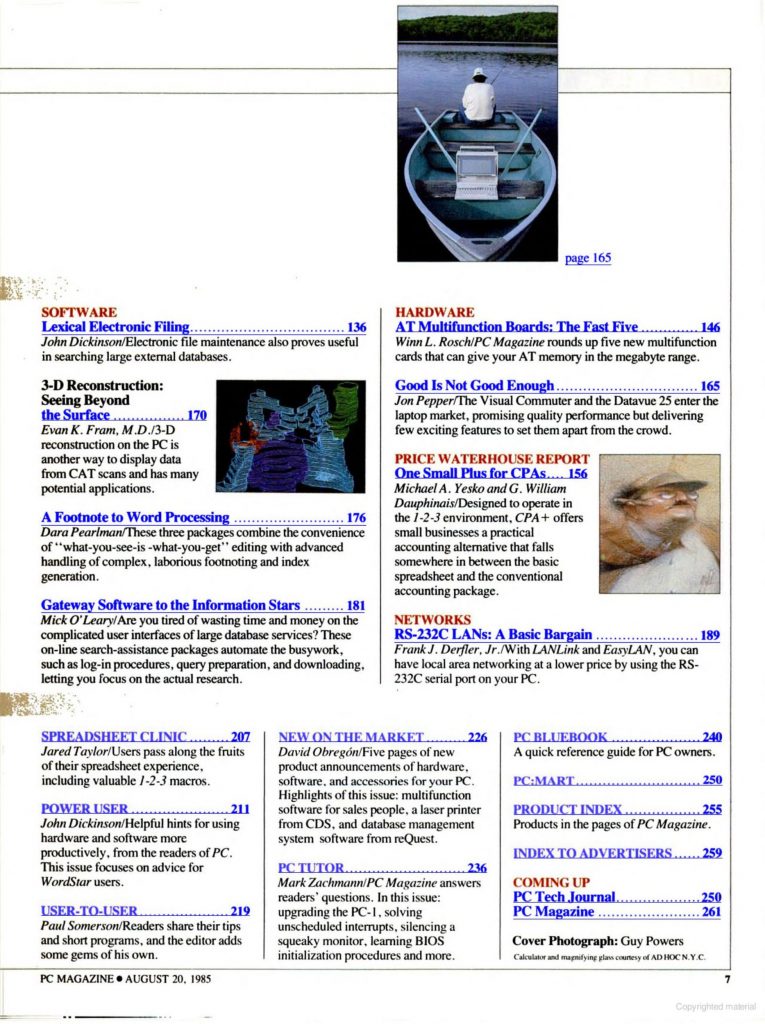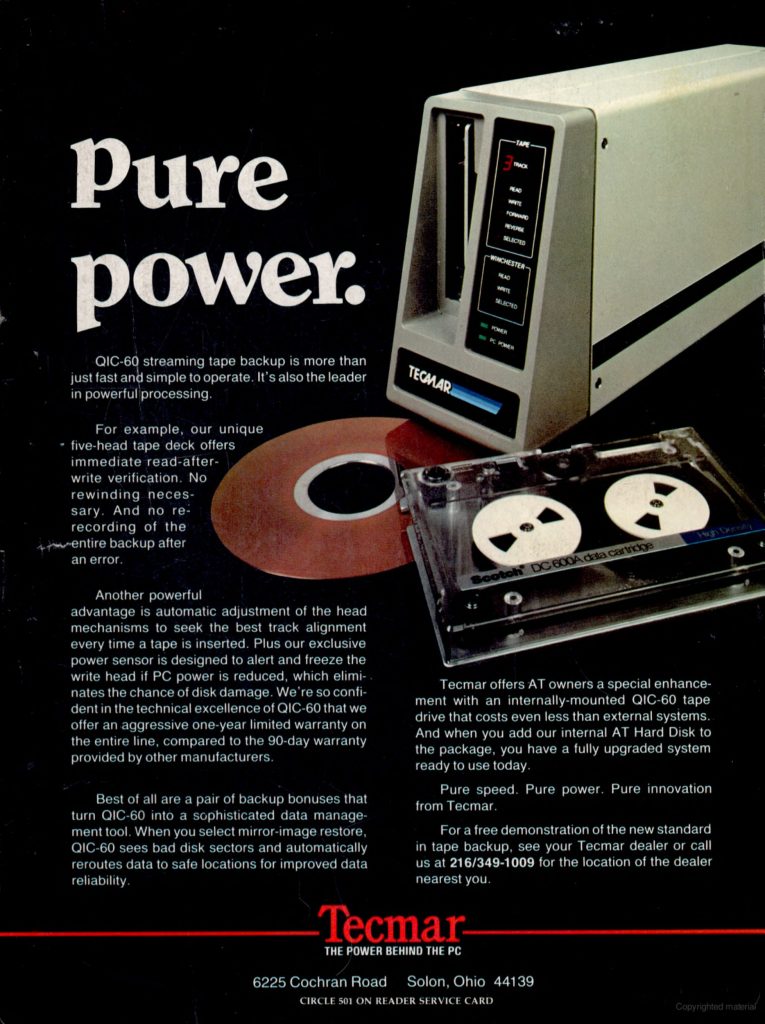Source: PC World – February 1991
By the early 1990s, PCs were being rapidly adopted though it would still be a few more years until the Internet came into widespread use. When AOL started providing web access in 1995 is probably a good metric for that. PC World was certainly one of the most popular PC magazines at the time and in 1991, 486 based PCs were around but 386 (and lower) were still much more common. The February 1991 issue of PC World includes:
Cover Stories
- Excel 3.0: The Push-Button Spreadsheet – A preview of the latest version of Excel. Some new features of Excel 3.0 include a new tool bar, hierarchical worksheets, drawing tools, and more.
- Laptops in Living Color – A preview of a few upcoming laptops with color screens including the Sharp Colorstar featuring a 20-MHz 386 CPU, 100MB hard drive, and 256 color VGA screen for between $10,000 and $15,000 and the Toshiba T3200SXC featuring 20-MHz 386SX CPU, 120MB hard drive, and 256 color VGA screen for $9000. Those color screens weren’t cheap then.
- Value Alert! 20-MHz 386SX Systems – Reviews of the latest batch of 20-MHz 386 based computers including the ALR Powerflex 20CSX ($3600), AST Premium II 386/20 ($3528), Compaq Deskpro 386x/20 ($4279), Dell 320LX ($3659), NCR PC386sx20 ($3547), and NEC PowerMate SX/20 ($3635). Typical specs included 4-5MB of RAM, 100-120MB hard drive and VGA graphics.
- Personal Laser Printers: Looking Better All The Time – Reviews of the latest laser printers including the Brother HL-4 ($1381), HP LaserJet IIP ($1493), IBM LaserPrinter E ($1500), Okidata OL400 LED Page Printer ($994), Panasonic KX-P4420 Laser Printer ($1334), and Tandy LP 950 ($2199).
Special Report
- Windows – A special supplement on windowing environments and applications.
- The Windows-Mac Connection – A look at GE’s experience getting Macintoshes and Windows based PCs working together.
- Reviews – Reviews of The DeskTop Set 3.0, Spinnaker Plus 2.0, Ashlar Vellum for MS-DOS With Windows 3.0, PerForm Pro Designer and Filler, Distinct Back-Up 2.0, Command Port 7.0, and Windows Workstation Release 3.
News
- Top of the News – 16-ppm laser printers hit the market, CD-ROM and erasable optical technologies arrive, IBM introduces the luggable PS/2 Model P75 featuring a 33-MHz 486 CPU and 8MB of RAM for $16000, and more.
- Industry Outlook – IBM and Tandy back new multimedia standards with better audio and CD-ROM drives coming to PCs soon, cheaper laser printers on the way, 9600bps modems gaining ground, Macintosh introduces low cost LC model to tempt PC users, and more.
- Product Outlook – A look at new and upcoming products including the AST Premiu Exec 386SX/20 and 286/12 notebook models, Howtek Personal Color Printer, Control Point Backup, Crosstalk Communicator 1.0, Zeos 286 Notebook, Tandy 2810 HD, Toshiba T2000SX, and lots more.
Previews
- PageMaker Tries Harder – A preview of PageMaker 4.0 desktop pubishing software.
- ccMail Meets Windows – A preview of cc:Mail for Windows 1.0 e-mail package.
Features
- Taming the Telephone – What contact management software can do for you.
- Buyers’ Guide: Management Software – A guide to numerous contact management tools including Act 2.0, Contact Professional 2.4, The Desktop Set 3.0, Performer 2.01, Tracker 4.0, and many others.
- The WordPerfect Office – Communications and file-sharing functions for users of WordPerfect products.
How To
- The Help Screen – Questions answered about duplicating fields in Paradox 3.0, end of the month macros for spreadsheets, and more.
- Network Q&A – Questions answered about fault tolerance, including disk mirroring and duplicating.
- Windows Walk-Through – The basics of using Windows.
- Words Into Print – Automatic footnoting with WordPerfect.
- Spreadsheets (A…Z) – Graphing spreadsheet data with Lotus 1-2-3 version 2.x.
- Data Basics – Adding titles and column headings to database reports.
- The Art of Persuasion – Choosing the best typefaces for business documents.
- The Information Edge – Tips for getting the best value out of GEnie’s off-hour services.
Departments
- Richard Landry – The new Windows craze.
- Letters – Letters from readers about accounting software, installing Windows 3.0, tech support, shareware, and more.
- Consumer Watch – Advice for getting an old PC fixed.
- Taking It Home – Tips for backing up and insuring your home/office computer.

…and more!










